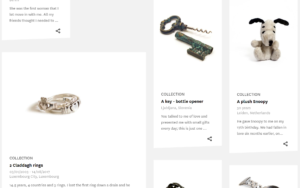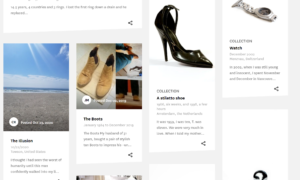The theme of my exhibition is ‘Childhood’. In response to this theme, I want to explore the impact of childhood on people’s development and personality formation. Psychologists believe that almost everything from the shaping of an adult’s personality, to how they behave in intimate relationships, to their attitudes to frustration, to their abilities and interests at work, is in fact a repetition of their childhood experiences. Most people’s childhoods are almost identical and different, and the same things that occur in our childhoods may have different effects and meanings to each of us.
I want to explore as much as I can the influences of childhood that make us ‘us’ and not just another individual, and I believe that our different childhoods have some guidance for our current thinking and behaviour. This is not necessarily an entirely positive topic, as many people have had traumatic and unfortunate childhoods. As they grow up they may still be subconsciously trying to make up for the lack of their childhood with their own lives.
My curatorial format was inspired by the Museum of Broken Relationships, where I hope to collect a wide range of objects from the public that are important to their childhood and then group them together for display. As some of the objects are difficult to transport or are no longer on the market, I cannot exhibit them in physical form, so I will include some photographs. I will attach stories to these items as they relate to them. I have received a number of items so far, such as marbles and Tamagotchi. Many people have offered snacks, but for different reasons. Some people go to the kiosk next to their school after school to buy snacks and share them with their classmates, eating them as they go home. It was a medium for them to recall their childhood memories and friendships. And some are not allowed by their parents or school to buy snacks. Snacks then became their way of making up for their childhood, and after they had relative financial independence, some made up for their childhood by overeating.


I also received suggestions for activities from childhood, such as origami, which many people used to have fun with as children by playing games. Many people proposed that origami developed their hands-on skills. There were also some games of hopscotch, tumbling and hopscotch. I might have put up a hopscotch grid on the floor of the classroom I rented, both as part of the exhibition and as a way of guiding the audience through the sequence of the exhibition.
I was then introduced by my tutor to the MA Contemporary Art Practice students at our school. I met Yuting Lou, who is an excellent artist and photographer. The work she exhibited was called ‘Gift’, a series of photographs of two girls with scars from their past lives. The scars are a gift from life and a painful part of it, and the events that brought them about have had a different impact on their lives. But in the end they accepted the scars and called them a gift. She also showed me another set of her photographs, reflecting on the relationship between students and teachers when she was a child. In her school, the teachers had absolute authority and the students had to do whatever they were told. In this group of photographs, the models stand naked on the podium and among the hanging banners, meaning that the students do not have any privacy in the environment shown. There is no room for personal choice. These works are a good reflection of how childhood experiences have guided and influenced the artist’s work, and I have borrowed these two sets of works from her to display in the exhibition.
For the rest of the exhibition, I am still looking for the artist to provide a video for this exhibition to better showcase and explore the thematic ideas of the exhibition.


Leave a Reply